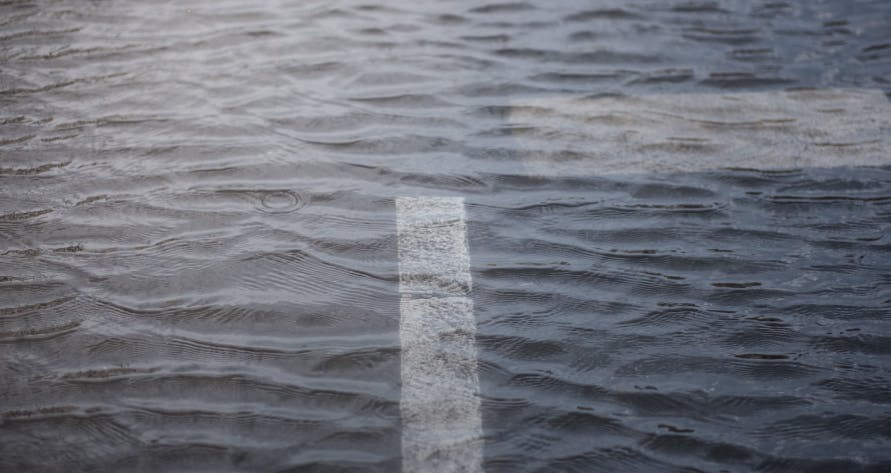Overshoot Day: What Does It Imply?
Earth overshoot day is becoming more worrisome as each year passes. What is overshoot day about? Find out more about this term and what it implies.
Your request has been taken into account.
An email has just been sent to you with a link to download the resource :)

As if the rising global temperature wasn't a big enough problem, the planet isn’t on track for it to get any better.
In fact, the world is set to hit a global temperature of 3°C this century - and the aftermath of this continued, detrimental global warming isn’t going to be pretty.
How would each part of the world be impacted by this intense, 3°C rise in global temperatures? Is there any way to prevent this from happening?
Global temperatures are set to continue rising exponentially due to the continued excessive use of fossil fuels, which are creating greenhouse gasses that are warming the Earth’s temperature.
Unless stringent measures are taken immediately, the global population will suffer the deleterious effects of extremely high global temperatures.
Places with already intense temperatures like Arizona, Florida, Texas and California in the United States will have an increase in their annual high temperatures – both in terms of how many days the extreme temperatures last, and the actual temperature.
Heat waves are difficult on the human body: as they provoke sleepiness, hydration, and inefficiency to get simple tasks done. It’s estimated that there is an increasing death toll due to extreme heat, and that is only likely to get worse if global temperatures continue to rise.
If global temperatures continue to rise, so will the frequency and intensity of natural disasters.
Natural disasters such as hurricanes, heat waves, thunderstorms, droughts, and tornadoes are going to continue to occur more frequently in correlation with rising global temperatures. Global warming provokes a change in climate, and this is the reasoning behind the drastic heat waves we have experienced in the past couple of decades.
If more devastating natural disasters are to occur in the future, it will only hinder the global population from having the financial capability to mitigate climate change. This is because the cost and time needed to repair the damage caused to cities, local communities, and developing countries caused by natural disasters will cut into the time, money, and resources available to fight against climate change.
It’s ironic, but plausible – the more we avoid reducing the rise in global temperatures, the more difficult it will become later due to the other negative effects the climate change will have on the world.
Rising sea levels threaten around 12% of the global population. Most people hear about rising sea levels and presume it just means that gorgeous coastlines that are merely for aesthetic purposes will dissipate, but it’s more than that. Populous cities like Miami or Amsterdam, home to nearly three million and over eight hundred thousand people respectively, could be entirely under water by the end of the century.
👉 Historical landmarks could also be in grave danger, like the National Mall in Washington D.C. or landmarks in New Orleans.
Beside threatening human settlements, rising sea levels can also provoke more disastrous hurricanes and typhoons – meaning rising sea levels could contribute to even more natural disasters than global warming itself will already create.
Rising sea levels will also contaminate our already-sparse-source of drinking water, interfere with the irrigation systems necessary for farming essential crops, contribute to erosion, flooding, and overall soil contamination. In short, rising sea levels will impact the agricultural industry immensely – and crops are imperative in the food chain for human survival.
Wildlife will also be affected by rising sea levels. Habitats for fish, birds, and plants will suffer due to rising sea levels – and an ecosystem thrown off balance will continue to impact human life on Earth.

A rise in global temperatures will provoke more droughts. Only three percent of the world’s water is drinkable or usable for crops, and if that source of water becomes even sparser than it already is – the means to produce crops could prove catastrophic. For example, malnutrition and poverty will skyrocket to worrisome levels.
This is likely to impact natives, especially – who dwell in rural areas where crop harvests are essential to survival. If they are forced to flee their indigenous homes due to insufficient resources like water caused by droughts, in turn – urbanization will increase, and greenhouse gas emissions will too as a result.
If global temperatures rise, ecosystems will suffer immensely. Ecosystems are imperative to sustain all types of Earthly life, as they provide resources, prevent soil erosion, maintain water basins and promote biodiversity.
In short, ecosystems provide food, water, and jobs – which are all essential components of human life and survival.
If ecosystems suffer due to global warming, sectors like agriculture will be heavily impacted – as crops and wildlife will have nowhere left to thrive, which directly affects human livelihood.
Excessive droughts caused by a rise in global temperatures will directly affect agriculture. If usable water becomes nearly extinct as a resource, then there will be insufficient crops to power the food chain necessary for human survival.
Agriculture will also take away jobs that many people rely on, and in turn – create an economic crisis, or force indigenous people to leave their native habitat and relocate to cities that are already contributing to global warming more than they should be.
Since natural resources, agricultural lands, and crop abundance will suffer – natives of rural areas will be forced to flee. Rural areas will no longer provide inherent sustainable life, and those indigenous people will have to escape to already large, high carbon emitting cities for survival. This isn’t good for the global temperature, as urbanization will only perpetuate global warming and industrialization.
Urbanization has detrimental effects on the environment – as it provokes higher rates of industrialization and deforestation. Dramatic and rapid expansion of these already established cities in turn produces higher rates of greenhouse gas emissions, which only enhances the negative effects of global warming.
As if the domino effect of global warming wasn’t conspicuous enough, it is clear that if global temperatures continue to rise – there will be an unforeseen economic crisis around the world. This is because the money that it will take to constantly mend the damage that will be done to various sectors due to global warming, such as agriculture and natural disasters – will be used for repairs when it could be used to prevent these detrimental events from occurring in the first place.
It will come to a point where local cities and communities will not be able to keep up with the newfound expected expense of repairs due to climate change, and it will create economic problems within the entire sector. For instance, governments will have to allocate funding solely for potential droughts or heat waves and the damage they may cause.
If measures are taken now to reduce the rising global temperature, we can mitigate these odd financial circumstances that would wreck fiscal havoc in the world.
As a result of all the various scenarios and negative impacts of a 3°C rise in global temperature above, developing countries will most likely suffer the most consequences from this unprecedented rise in global temperatures.
Developing countries will experience devastating effects like hunger, homelessness, and increased death tolls because they will not have the financial resources to keep up with the continued deleterious effects of global warming. Countries that used to provide financial support to these developing countries will no longer be able to do that, as they will be too busy trying to reallocate their own dollars to ensure their own societies or countries do not suffer the consequences of global warming.
Overall, the impact of a 3°C rise in global temperature will negatively affect multiple sectors imperative to survival around the world, and as each of those individual sectors suffer – another sector will face the ill effects as well.
For instance, if developing countries are suffering – urbanization will increase alongside greenhouse gas emissions. If there are continuous droughts due to the increase in global temperatures, then agricultural and crop production will suffer and lower the abundance of food supply, and again – create an already existing crisis for developing countries.
In all, a 3°C rise in global temperature is bound to have disastrous effects everywhere in the world – and those negative effects occurring in each individual sector will continue to feed off one another as long as global temperatures continue to rise.
There are many precautions that could be taken in order to mitigate this potential 3°C rise in global temperature.
For starters, the most imperative step to take in attempts to avoid a drastic rise in global temperature is to enforce stricter policies that prohibit the use or burning of fossil fuels.
Greenhouse gas emissions are one of the main culprits to the increase in global temperatures, and therefore – it’s essential that more companies seek renewable energy sources to reduce their carbon footprint.
Also, companies could seek to install carbon capture and storage systems, which is a new piece of innovative technology that seeks to remove carbon dioxide emissions directly from the original source of industrial activity. If all companies in the world could implement a carbon capture and storage system into their business production, it would drastically reduce the chances of our world reaching a 3°C rise in global temperature.
However, carbon capture and storage systems aren’t affordable or easily accessible to everyone. If this is the case, the best thing a company can do to start aiding in the fight against climate change is to take baby steps to altering their business model to be more environmentally friendly.
For instance, you can start with carbon accounting to see where you are most responsible for producing excessive carbon emissions. Then, you can strive to create more sustainable business habits, establish an environmental management system, and eventually – obtain an ISO 14001. All of these measures will ensure that your company is striving to reduce your carbon footprint, and will also directly benefit your business – since customers and investors alike will be more likely to want to contribute to a project, product, or service that is passionate about protecting people and the planet.
Little actions matter, too. It may seem trite – but things as simple as reducing your consumption of plastic, opting for public transportation instead of a polluting vehicle for your commute, or turning off lights or electronics when they’re not in use all add up.
It’s not too late for us to avoid a 3°C rise in global temperature, but global leaders, large companies, and individuals around the world need to shift their priorities as soon as possible to avoid this potential global warming catastrophe.
If reading this article about a 3°C rise in global temperature and its impact on the globe has made you interested in reducing your carbon emissions to further fight against climate change – Greenly can help you!
Greenly can help you make an environmental change for the better, starting with a carbon footprint assessment to know how much carbon emissions your company produces.
Click here to learn more about Greenly and how we can help you reduce your carbon footprint.


We share green news once a month (or more if we find interesting things to tell you)